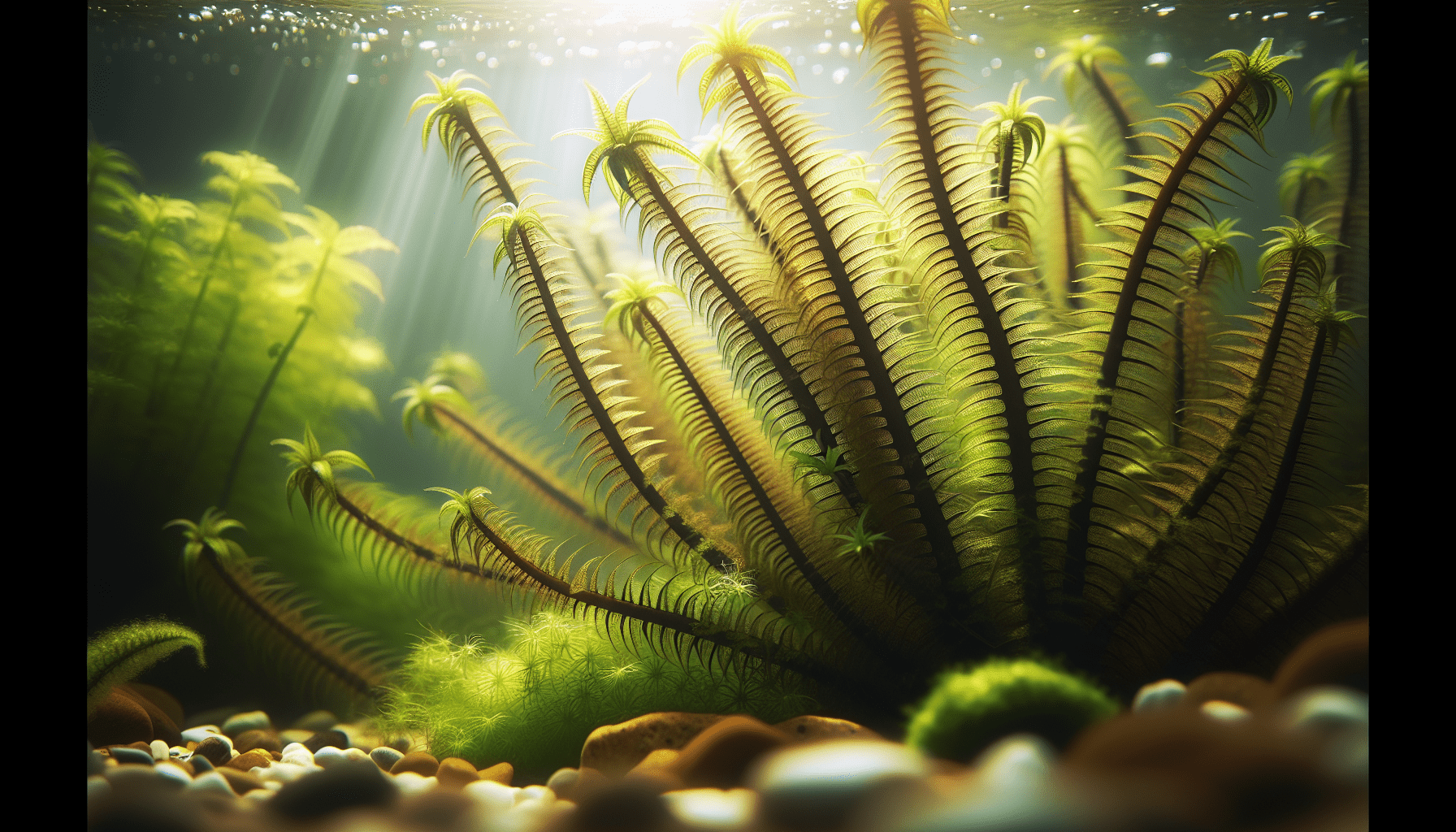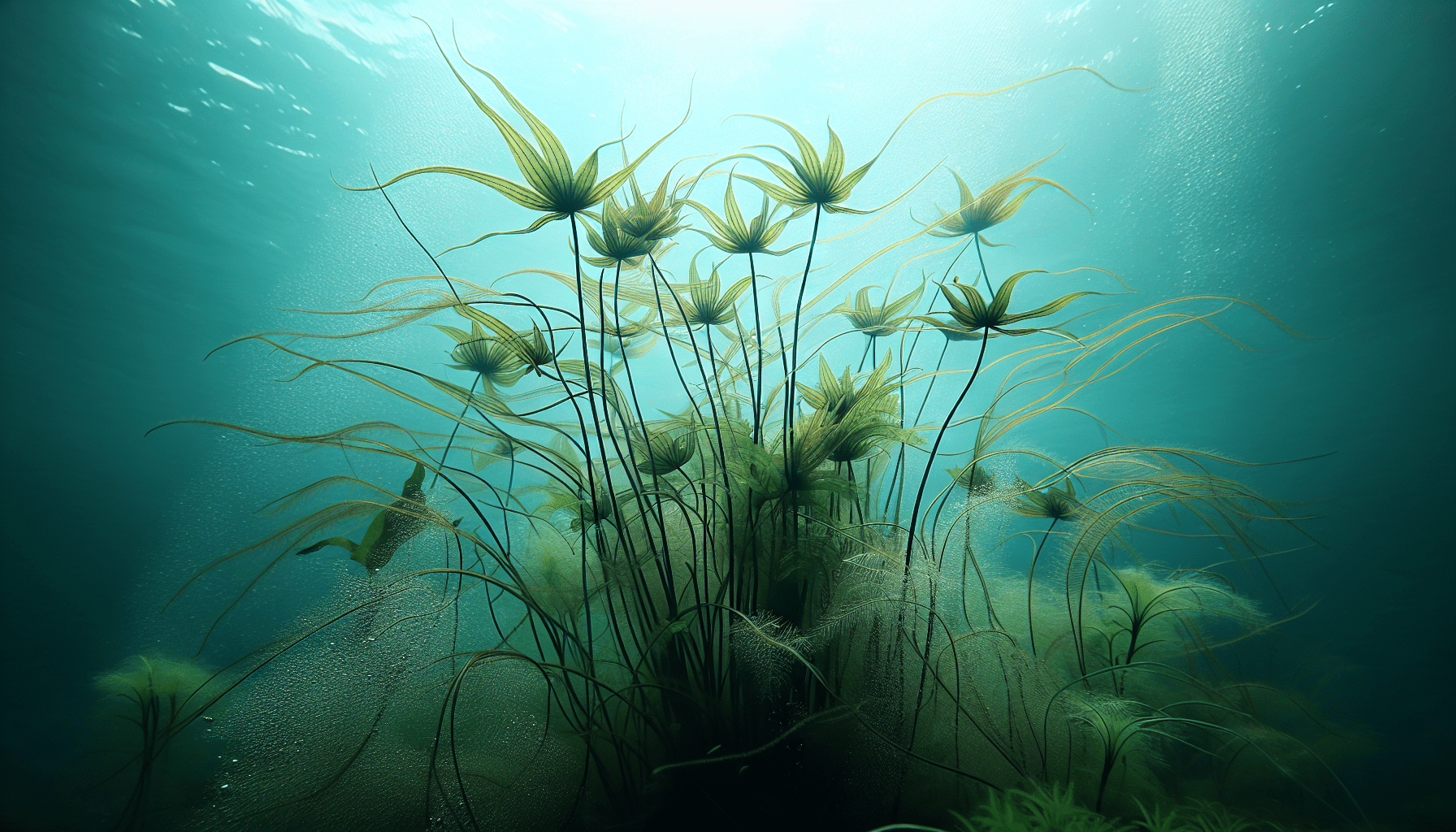Embarking on an exploration of the aquatic world, you might encounter a plant species known as Najas Kurziana. An aquatic weed that signifies far more than its superficial attributes, it becomes essential to decode its significance, distribution, and impact on aquatic ecosystems. As you venture through this article, you will unfold the mysteries of Najas Kurziana, gain insights about its botanical characteristics and learn about its role within various aquatic habitats.

Basic Information about Najas Kurziana
Taxonomy and scientific classification
Najas Kurziana is an underwater plant species that belongs to the Hydrocharitaceae family. This family consists of several aquatic weeds that grow in freshwater habitats. It pertains to the Najas genus, a group of approximately 40 species known for being cosmopolitan or globally widespread. Scientists classify Najas Kurziana primarily as aquatic plants but this classification can extend to categorize them as submerged macrophytes or waterweeds.
Common names and synonyms
Although its formal scientific name is Najas Kurziana, this aquatic plant is also referred to by its common names, which vary depending on the region where it is found. Some of these names include water nymph and naiad. It’s important to note that despite these varying names, they all refer to the same plant species.
Geographical Distribution
Najas Kurziana has a wide geographical distribution. This underwater weed is generally found in freshwater habitats around the world, but is particularly abundant in tropical and subtropical regions.
Habitat and ecological preferences
The preferred habitats of Najas Kurziana include freshwater environments like ponds, lakes, and slow-moving rivers. This plant shows a preference for clarified waters where it can access suitable sunlight for photosynthesis. Moreover, as it is a nitrophilous species, Najas Kurziana grows well in habitats with a high level of nitrogenous compounds.
Morphological Traits of Najas Kurziana
Size and overall structure
Najas Kurziana is characteristically small in size, with a height usually extending from 10 to 60 centimeters. The plant structure consists of a slender, string-like stem, with several branches extending out to form a dense underwater thicket.
Stem and branching characteristics
The characteristic stems of Najas Kurziana are thin, filamentous, and delicate, reaching up to 60 centimeters in length. The branching pattern of Najas Kurziana entails alternate arrangement, with each branch functioning as an independent plant unit.
Leaf and root system
Najas Kurziana bears slender and opposite or whorled leaves. These leaves have serrated margins and are usually 1-3 centimeters in length. Regarding the root system, it is relatively sparse and fragile, as the plant primarily clings to substrates using its tough, fibrous stems.
Reproductive organs: flowers and seeds
Najas Kurziana is a monoecious plant, which means that it bears both male and female flowers on the same plant. The inconspicuous flowers give way to tiny, buoyant seeds which facilitate the plant’s dispersal.
Najas Kurziana’s life cycle
Seed Germination and growth
Najas Kurziana begins its life cycle with seed germination, which typically happens during early spring when water temperatures are favorable. Following this, the seedlings grow rapidly, reaching maturity within a few weeks.
Vegetative Reproduction
Like many aquatic plants, Najas Kurziana has a pronounced capacity for vegetative reproduction. It can propagate via fragmentation, wherein functioning pieces of plant get detached and start growing into new individuals.
Flowering and seed dispersal
The flowering typically occurs in late summer. Notably, Najas Kurziana has an underwater self-pollination mechanism that ensures seed production. Following this, the seeds are disseminated by water currents, thus enabling the plant’s wide distribution.
Adaptation to seasonal changes
Najas Kurziana exhibits annual or biennial life cycles, with a pronounced adaptation to seasonal changes. In unfavorable conditions, such as during winter, the plant primarily exists as dormant seeds. In summer, however, its growth is rampant.

Cultural significance of Najas Kurziana
Use in traditional medicine
There’s limited documented evidence of Najas Kurziana’s role in traditional medicine. However, aquatic plants in general have been known to play significant roles in traditional healthcare systems in some cultures.
Symbolic value in culture and religion
While Najas Kurziana doesn’t seem to hold much symbolic value in culture and religion, it certainly commands respect as an essential component of aquatic ecosystems.
Other uses
Beyond its ecological roles, Najas Kurziana also serves recreational purposes. Its ornamental features make it an excellent choice for aquascaping or the craft of arranging aquatic plants in aquariums.
Ecological Impact of Najas Kurziana
Role in ecosystem dynamics
Najas Kurziana contributes significantly to ecosystem dynamics. It helps in modifying water chemistry, particularly in binding and metabolizing excess nutrients. Hence, it plays a critical role in nutrient cycling and maintaining water quality.
Interaction with other species
Najas Kurziana interacts with various other species within its habitat, both animal and plant. It forms a crucial part of the food web, serving as a food source for different waterfowls and fishes.
Impact on water quality
By absorbing excess nutrients from the water, Najas Kurziana contributes to maintaining water quality. However, when the plant population becomes too dense, it may negatively affect water quality via oxygen depletion.
Invasive potential
With its notable reproductive capacity, Najas Kurziana has the potential to become invasive, particularly in habitats disturbed by human activities, like nutrient pollution.
Methods of controlling Najas Kurziana
Physical control methods
Physical control methods, like manual removal or suction dredging, can be applied to manage Najas Kurziana populations. However, given the plant’s intricate root system and fragmentation potential, these methods might not always be effective or practical solutions.
Chemical control methods
Chemical control, using herbicides, might be another approach. However, the side effects on non-target species and the environment need to be thoroughly considered.
Biological control methods
Biological control, including using specific plant-eating fish species like grass carp, can be an effective method in controlling Najas Kurziana populations. At the same time, such techniques should be used with caution due to potential impacts on biodiversity.
Integrated management approach
An integrated management approach, combining physical, chemical, and biological methods based on the specific context, is often the most effective way to control Najas Kurziana.
The use of Najas Kurziana in Aquascaping
Advantages for aquascaping
With its delicate structure and elegant appearance, Najas Kurziana can make a visually striking addition to aquascapes. Moreover, due to its nutrient-absorbing capabilities, it can also contribute to maintaining water quality in aquariums.
Potential difficulties and solutions
On the downside, its vigorous growth rate and potential for fragmentation could potentially lead to it taking over a tank. Regular trimming and good maintenance practices can help keep its growth under control.
Creative aquascaping ideas with Najas Kurziana
Najas Kurziana can be used effectively in the background or as a filler plant to create a sense of depth or a lush green outlook in an aquarium landscape.
Aquatic Wildlife and Najas Kurziana
Fauna associated with Najas Kurziana
The plant serves a crucial role in its native habitats, providing shelter and food to various aquatic creatures, including small fishes and invertebrates.
Najas Kurziana as a habitat for aquatic wildlife
The dense thickets formed by Najas Kurziana provide an ideal habitat and hiding places for numerous aquatic animals, especially juveniles.
Najas Kurziana’s effect on wildlife population
The presence of this plant can contribute to the richness of wildlife population by offering both food and shelter. But unabated growth can also create imbalances in local biodiversity.
Current Research on Najas Kurziana
Genetic studies and breeding research
Genetic studies can shed light on the plant’s adaptability mechanisms, reproductive strategies, and the potential for selective breeding. Such advances could help us understand its invasive potential more clearly and devise better control measures.
Ecological and environmental studies
Further research is required on the ecological impacts of Najas Kurziana, particularly in various environmental contexts.
Research on control methods and their effectiveness
Continuing research is essential to devise and assess novel and effective control methods to manage this plant, particularly in areas where it has become invasive.
Future Prospects of Najas Kurziana
Conservation efforts and their implications
While the focus often lies on controlling Najas Kurziana, conservation of this plant also merits attention, especially in locations where it is native and functions as a critical component of the ecosystem.
Potential uses in bio-engineering and biotechnology
Given its rapid growth and nutrient-absorption capabilities, Najas Kurziana may have potential uses in bio-engineering, particularly in creating wastewater treatment systems.
Future challenges in management and control
Changing climatic conditions and anthropogenic environmental disturbances could modify the growth patterns and distribution of Najas Kurziana, thereby giving rise to future challenges in its management and control.